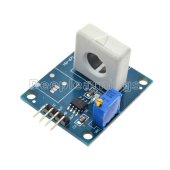再生可能 エネルギー
New Member
- Joined
- Nov 28, 2019
- Messages
- 272
I'm designing an off-grid solar generator for the lighting of a building,
so (after reading many FIY threads) I have two main questions in mind:
1. I cannot decide between getting an All-In-One solar generator system versus getting a separate SCC and Inverter?
I'm considering getting a "SCC only" because I want to be off grid and I don't want to have the risk to send back any energy to the grid.
However, with a "SCC only" I wonder how to determine when the battery is discharged (so I could disconnect my load and connect it to the grid)?
2. I would like to dump any solar excess into a diversion load, during the summer.
Some devices, such as the Midnite SCC have a load diversion control feature,
but I am puzzle about the batteries micro cycling issue, after watching this video:
I wonder how to trigger a relay to activate a dump load inverter if the SCC don't have a load diversion feature?
To be able to connect a dump load diversion is also something that I am considering for my choice of
getting an All-In-One solar generator system versus getting a separate SCC and Inverter:
Conclusion:
I would like to make progress in my project and to find the AIO or the separate solar devices that I will need.
Any additional comments would be very helpful, as I feel being in front of a wall.
so (after reading many FIY threads) I have two main questions in mind:
1. I cannot decide between getting an All-In-One solar generator system versus getting a separate SCC and Inverter?
I'm considering getting a "SCC only" because I want to be off grid and I don't want to have the risk to send back any energy to the grid.
However, with a "SCC only" I wonder how to determine when the battery is discharged (so I could disconnect my load and connect it to the grid)?
I already built a transfer switch, so I could manually switch my load between the grid and the Inverter output.
But this is mostly for maintenance, when I need to disconnect the solar system to work on a component (PV, SCC, Battery, Inverter...)
I would like now to find a way to automatically trigger my transfer switch. I could use some voltmeter detector,
but the voltage precision might not be sufficient in the case of a 48V LiFePO4 battery to determine the SoC.
I believe that an All-In-One system can be used directly as transfer switch, which migh solve this issue.
But in this case, is it possible to diseable permanently the All-In-One device from sending energy to the grid?
Note:
I need an SCC with two PV inputs, and each input will be around 250 Voc and 25 Amp to charge a 300Ah 48V LiFePO4 battery.
I need a 120V Inverter only at night, for a 8A consumption, so a 1.5kW inverter would be sufficient,
however I am looking for a very efficient Inverter, in particular I would prefer that the fan of the inverter was not running,
since at night I would have a continuos load maybe for 10 hours.
So, does a 3kW or 5kW Inverter, which migh have a larger radiator, would be more efficient and preferable than a 1.5 kW inverter?
This is also one reason why I am considering using a separate inverter versu an AIO system, so I can select the optimun inverter for my need.
Also I can turn off the Inverter during the day, using a timer, to be sure that the battery will be sufficiently charged for the longer nights.
Most AOI systems have a 5kW to 10kW output, but I don't need that much output power.
I don't think either that it is possible to shutdown the internal AOI inverter?
2. I would like to dump any solar excess into a diversion load, during the summer.
Some devices, such as the Midnite SCC have a load diversion control feature,
but I am puzzle about the batteries micro cycling issue, after watching this video:
The author of this video recommends to connect directly the dump load to the SCC,
but in this case there is no battery to provide a buffer in case of cloudy weather?
I wonder how to trigger a relay to activate a dump load inverter if the SCC don't have a load diversion feature?
Would it be possible to use the 'dry' connection that some SCCs have to start and stop an external generator,
to connect an external dump load (when the generator can be turned off because the battery is charged)
and to disconnect the external dump load (when the generator needs to be started because the battery is low).
I believe that in general, AIO systems have a generator 'dry' connection,
but I don't think that is feature is available for "SCC Only" device?
However, some Inverter/Chargers often have a a generator 'dry' connection,
but such devices are more expensive that simple Inverters, and I will not use the charger.
To be able to connect a dump load diversion is also something that I am considering for my choice of
getting an All-In-One solar generator system versus getting a separate SCC and Inverter:
Because in the case of a separate Inverter, I can select the Inverter that I need for my dump
load, such as I would like to use a 240V split phase Inverter that I could disconnect when not needed.
However, an AIO system might provide a 'dry' connection for an external generator
that I could use to trigger my dump load diversion.
Conclusion:
I would like to make progress in my project and to find the AIO or the separate solar devices that I will need.
Any additional comments would be very helpful, as I feel being in front of a wall.



